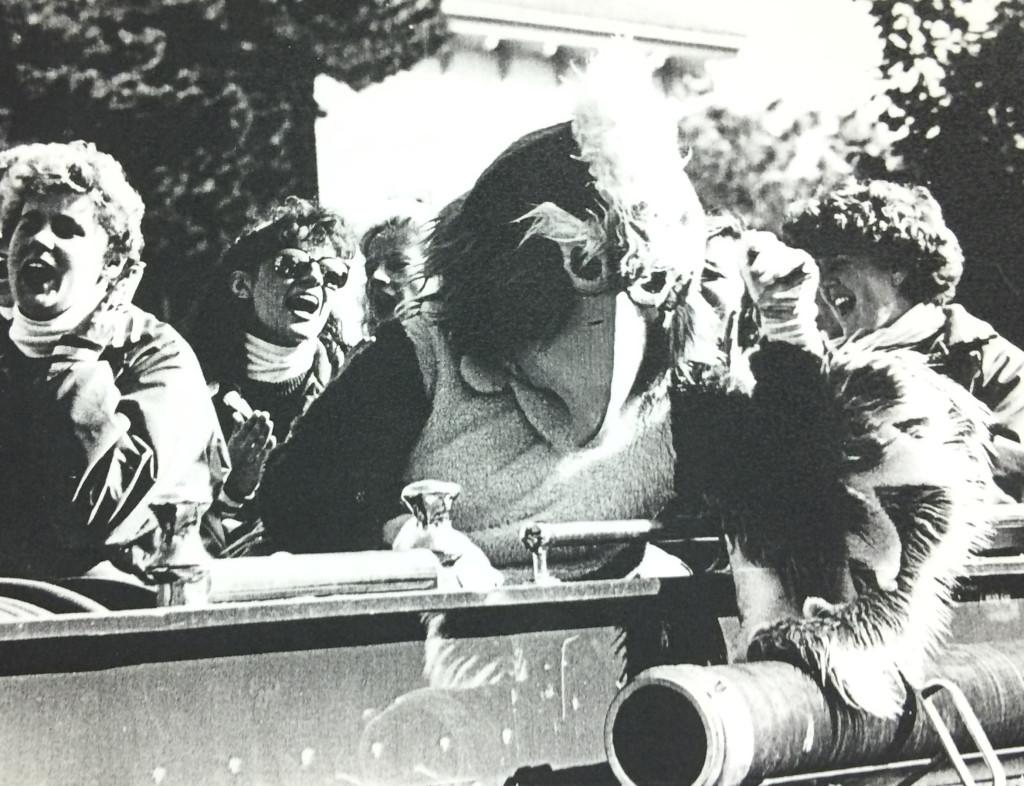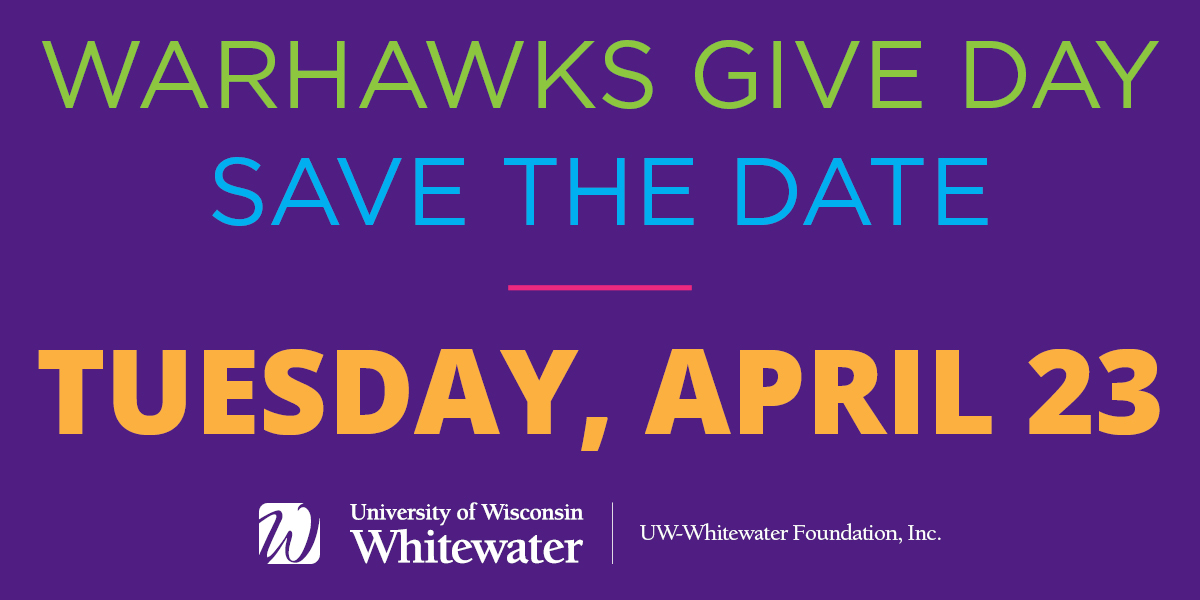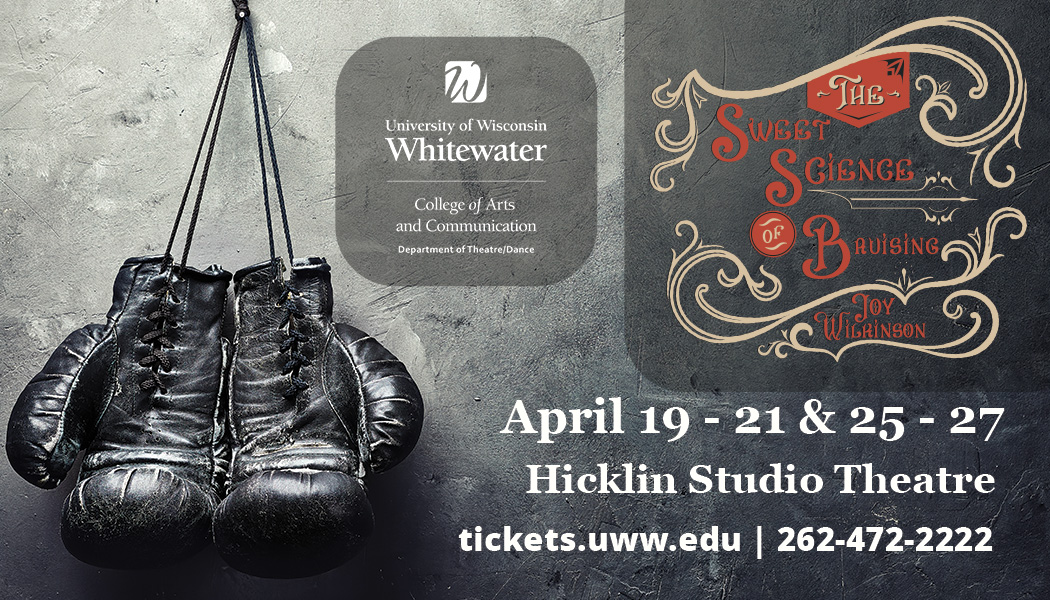Nov. 19, 2014
By Vesna Brajkovic
It’s hard to imagine UW-Whitewater without including Willie the Warhawk, the university’s mascot since the 1950s. But Willie hasn’t always been the purple and gray, tennis-shoe-wearing hawk with an animated personality the campus has grown to know.
In the early years of UW-W you might have distinguished your school only by its long-time school color, purple, or by doing the Quaker Strut before football games. A Native American warrior named Willie may have even donned crewnecks across campus.
UW-W never had an official mascot or nickname before the late ’50s, but it had a couple monikers that stuck, out of necessity, for identification.
Through the 1930s Minneiska, the Whitewater Yearbook, referred to the university football team only as the “Purples,” based on their jersey color. This general referencing continued until “Quakers” eventually caught on.
The origin of the name Quakers is hard to pinpoint, but several versions of one story involving a baseball team serve as some kind of explanation.
As the story goes, according to a 1958 Royal Purple issue, around 1915, a traveling baseball team on the verge of bankruptcy stopped in Whitewater for a game. Unable to pay for a hotel they left their team jerseys, with “Quakers” printed across them, as compensation.
Another version of the story by Clarence Kachel, a 1918 graduate, tells of a baseball team from Winnipeg, Canada that came to Whitewater for spring training and ending up staying in Whitewater. The team would later become the Whitewater Quakers of the Central State League, which Kachel was a part of.
The team was also said to be the disbanded Whitewater City baseball team, according to a story by Whitewater instructor Lucy Baker in Whitewater Magazine.
Finally, another story surrounding the origin exists.
Major teams across the U.S gave up baseball for the duration of World War I, turning in their uniforms to Spaulding and other sporting goods companies. In turn the companies sold them back to “sandlot” teams across the country. Whitewater was given 15 uniforms from a Philadelphia baseball team.
Whichever version of the story holds true is history. The Quaker name was never officially adopted by the university, but students reluctantly accepted it over time.
Recognizing the need for a mascot and nickname that fit both the region and spirit of campus, the Royal Purple sponsored and issued a name change contest in a 1958 issue.
The guidelines listed in the contest notes stated the “name had to possess the qualities of originality, fight and tradition.”
The winning name “Warhawks,” submitted by four students, was selected by an eight-member committee to replace the unofficial Quaker emblem. The students recieved $10 for chosing the winning name.
Because Whitewater is a historically Indian county, the ‘Warhawk’ mascot was depicted as a Native American named Willie.
Prompted by complaints from the Native American Student Association, Whitewater Student Government recommended the change of the athletic symbol.
By the ’70s, a hawk was selected to replace the original Willie the Warhawk.
Since then the Warhawk has evolved to what we currently know as Willie the Warhawk.
The current mascot costume is close in appearance to the current emblem, but that hasn’t always been the case.

Through the years, Willie’s look has transformed from a run-of-the-mill bird costume, to a custom made one from a company in Canada.
“What I’m very pleased with is that our mascot actually looks like our logo,” associate director of Recreation and Sports Therese Kennedy said. “It resembles it very well.”
At the grand opening of Kachel Fieldhouse in 2001, Willie had a brand new costume. Since then, there have been three recreations of the same costume, to accommodate for wear and tear, Kennedy said.
Although the identity of the person inside the Warhawk costume is kept under wraps majority of the time to allow for suspension of disbelief, one of the those students, Jack Lomax, spoke on his unusual job.
There are certain rules and regulations to follow while in character, Lomax said, and most of them are common sense.
Mascots are expected not to talk, act appropriately, be aware of their surroundings and be friendly and welcoming.
Lomax said the best part of being Willie, who is in high demand according to Kennedy, is working the football games.
“People just keep on calling you, you’re walking through the stands and everyone’s taking selfies with you,” Lomax said. “Everyone is excited for you to be there.”
Although the nicknames and mascots for UW-W have evolved and changed since the start, Willie proves to be a crowd favorite that may last the test of time.













Cindy Savage • Jul 29, 2018 at 5:45 pm
When I was a freshman in 1974, Willy Warhawk was a kewpie-like figure brandishing a tomahawk. Later Willy became a proud indian brave. By the time I graduated in 1978, Willy had become the bird he is today, though not quite as stylized. I still have a few souvenirs with pictures of the first 2 Willies.